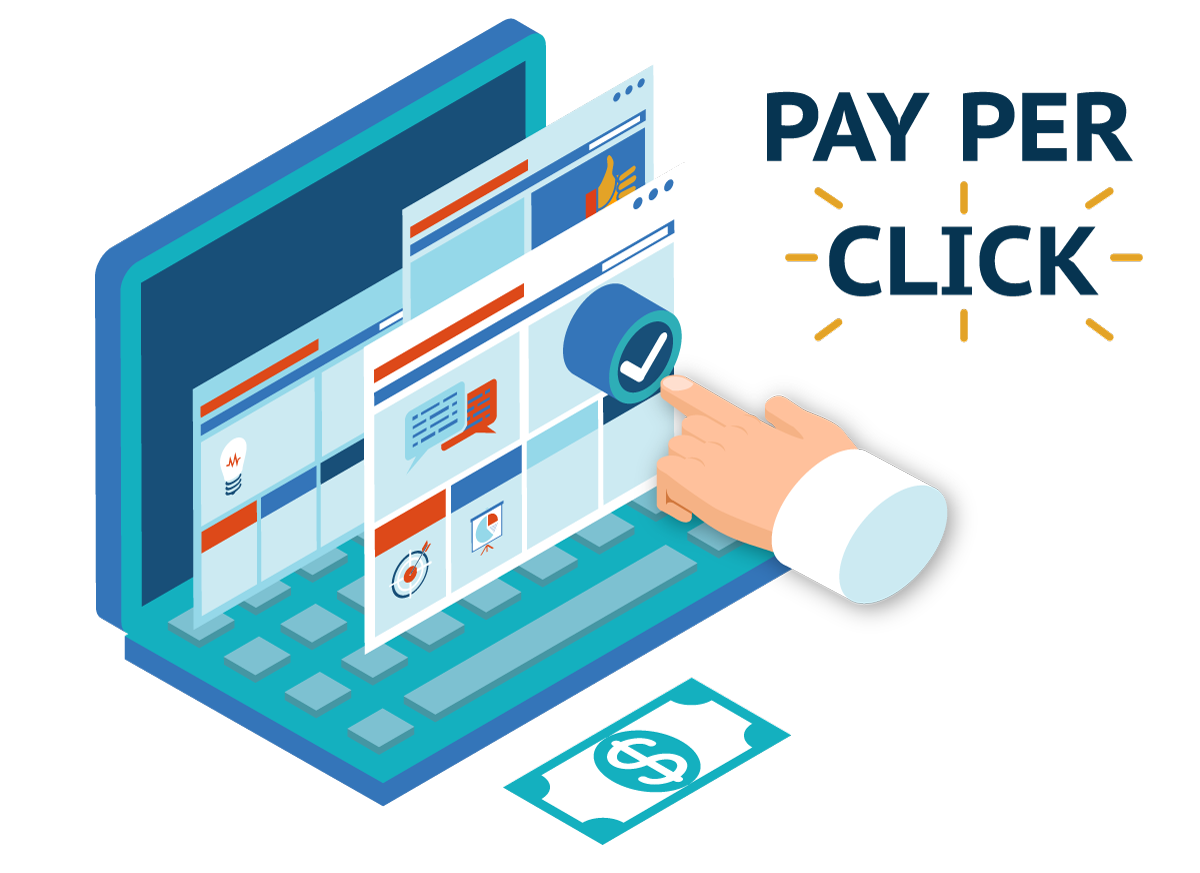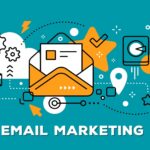In today’s competitive digital landscape, businesses need effective strategies to reach their target audience quickly and generate tangible results. One of the most efficient ways to achieve this is through PPC advertising. Pay-per-click (PPC) advertising allows businesses to place ads on platforms like Google, Bing, and social media channels, paying only when a user clicks on their ad. This makes PPC a cost-effective method for driving targeted traffic, boosting conversions, and growing brand visibility.
In this article, we’ll dive into what PPC advertising is, why it’s beneficial for businesses of all sizes, and how to create successful PPC campaigns.
What is PPC Advertising?
PPC (Pay-Per-Click) advertising is a model of digital advertising where advertisers pay a fee each time one of their ads is clicked. Essentially, you’re buying visits to your site, rather than earning them organically through search engine optimization (SEO).
PPC ads appear at the top or bottom of search engine results pages (SERPs) or on other digital platforms like social media and partner websites. The most popular platforms for PPC advertising include:
- Google Ads
- Microsoft Ads (Bing)
- Facebook Ads
- Instagram Ads
- LinkedIn Ads
- Twitter (X) Ads
Why PPC Advertising is Important for Businesses
PPC advertising has become an essential part of any comprehensive digital marketing strategy due to its ability to deliver fast and measurable results. Here are some of the top benefits of PPC:
1. Immediate Visibility
PPC allows your ads to appear at the top of search engine results immediately after launching a campaign. Unlike SEO, which can take months to show results, PPC provides instant visibility, making it perfect for businesses that need quick exposure.
2. Highly Targeted Audience
PPC enables businesses to target specific audiences based on factors such as demographics, location, interests, search intent, and even the time of day. With this precision targeting, businesses can ensure their ads are being seen by the people most likely to be interested in their products or services.
3. Cost-Effective
Since you only pay when someone clicks on your ad, PPC is a cost-effective way to spend your marketing budget. This model allows businesses to control their ad spend and monitor performance easily, ensuring that every dollar is used effectively.
4. Measurable Results
One of the biggest advantages of PPC is that it provides detailed analytics and reporting. Businesses can track various metrics such as impressions, clicks, conversions, and return on ad spend (ROAS). This level of insight allows for continuous optimization of campaigns to maximize performance.
5. Enhanced Brand Awareness
Even if users don’t click on your ads, PPC still offers value by increasing brand awareness. Ads that appear on search engines or social media build familiarity with your brand, which can influence future purchasing decisions when users encounter your business again.
6. Flexibility and Control
PPC campaigns can be easily modified and adjusted in real-time. Whether you want to increase your budget, change ad copy, pause an underperforming ad, or test a new keyword, PPC platforms offer complete flexibility.
Key Components of a Successful PPC Campaign
Creating a successful PPC campaign involves a combination of strategy, research, and optimization. Here’s a step-by-step guide to ensure your PPC efforts deliver results:
1. Keyword Research
Keyword research is the foundation of any successful PPC campaign. Choosing the right keywords ensures that your ads appear when potential customers search for products or services related to your business. Use tools like Google Keyword Planner or SEMrush to find keywords with high search volume and low competition.
It’s also essential to identify negative keywords—terms that you don’t want your ads to appear for. This will help you avoid irrelevant clicks and save on ad spend.
2. Compelling Ad Copy
Your ad copy needs to be clear, concise, and persuasive. With limited characters available, make sure your headline grabs attention and your description communicates the benefits of your product or service. Include a strong call-to-action (CTA), such as “Shop Now,” “Learn More,” or “Get a Free Quote,” to encourage users to click.
3. Ad Extensions
Ad extensions allow you to add extra information to your PPC ads, making them more informative and engaging. Common types of ad extensions include:
- Sitelink Extensions: Links to specific pages on your website (e.g., product pages, contact page)
- Call Extensions: A phone number users can click to call your business directly
- Location Extensions: Displays your business address and encourages users to visit your physical location
- Review Extensions: Showcasing customer reviews or testimonials
Ad extensions not only improve the visibility and attractiveness of your ad but also help increase click-through rates (CTR).
4. Landing Page Optimization
Once a user clicks on your ad, they’ll be taken to a landing page—the page designed specifically to convert that click into a lead or sale. It’s crucial to ensure that your landing page is optimized for user experience. Here’s what to consider:
- Ensure that the content on the landing page aligns with the ad copy.
- Make the page load quickly and easy to navigate.
- Use clear CTAs to guide the user toward the next step (purchase, sign up, etc.).
- Keep the design simple and focused on the conversion goal.
An optimized landing page improves user experience and increases your conversion rate, ensuring you get the most out of your PPC spend.
5. Budget Management
One of the great advantages of PPC is that you can set a budget that suits your business. You can decide on a daily budget or monthly budget and adjust based on the campaign’s performance. Start with a small budget to test how your ads perform and then scale up once you identify high-performing keywords and ad copies.
6. Bid Strategy
PPC platforms use a bidding system to determine ad placement. Your bid is the maximum amount you’re willing to pay for a click on your ad. Platforms like Google Ads offer different bidding strategies depending on your campaign goals:
- Manual CPC (Cost-per-Click): You control the maximum amount you pay for each click.
- Maximize Clicks: Google automatically adjusts your bids to get the most clicks within your budget.
- Target CPA (Cost-per-Acquisition): Bids are automatically set to help get the most conversions at your target cost per acquisition.
- Target ROAS (Return on Ad Spend): Bids are adjusted to achieve a specific return on investment.
Choosing the right bidding strategy depends on your campaign goals—whether you want to maximize clicks, conversions, or ROI.
7. Monitoring and Optimization
Once your campaign is live, continuous monitoring and optimization are essential for success. Track key metrics like CTR, conversion rate, cost-per-click (CPC), and quality score to identify areas for improvement. Here are some tips for optimizing your campaign:
- A/B testing: Test different versions of ad copy, CTAs, and landing pages to see which variations perform best.
- Adjust bids: Increase or decrease bids based on the performance of keywords and ads.
- Pause underperforming ads: If an ad or keyword isn’t driving results, pause it and focus on the top performers.
- Refine targeting: Continuously analyze audience segments and adjust targeting to improve relevance.
Popular PPC Platforms
There are several platforms available for running PPC campaigns, each with its own strengths. Here’s a breakdown of the top PPC platforms:
1. Google Ads
Google Ads is the largest PPC platform, accounting for the majority of search engine traffic. With Google Ads, you can create search ads that appear at the top of Google’s search results or display ads on Google’s partner sites through the Google Display Network.
2. Microsoft Ads (Bing)
Microsoft Ads allows you to run search ads on Bing and its partner networks, including Yahoo. While Bing has a smaller audience than Google, it tends to have a lower cost-per-click (CPC), making it a great option for businesses looking for more affordable advertising.
3. Facebook Ads
Facebook Ads is ideal for businesses looking to engage with users on social media. With advanced audience targeting options, Facebook allows you to create highly customized campaigns based on user demographics, interests, and behaviors. Facebook Ads also extend to Instagram, giving businesses access to a broad social media audience.
4. LinkedIn Ads
For B2B companies, LinkedIn Ads offers a unique opportunity to target professionals and businesses. LinkedIn allows for highly specific audience targeting based on job title, industry, company size, and more, making it an effective platform for lead generation and business-to-business marketing.
Conclusion: Why PPC Advertising Should Be Part of Your Marketing Strategy
PPC advertising offers businesses an immediate and measurable way to reach their target audience, generate leads, and drive sales. Its flexibility, cost-effectiveness, and ability to deliver fast results make it a must-have in any digital marketing strategy. Whether you’re looking to increase brand awareness, boost traffic to your site, or improve conversions, a well-executed PPC campaign can help you achieve your goals.
At 10Bit.Digital, we specialize in creating and managing PPC campaigns that maximize ROI and deliver real results. Contact us today to learn how we can help your business grow with targeted PPC strategies.


